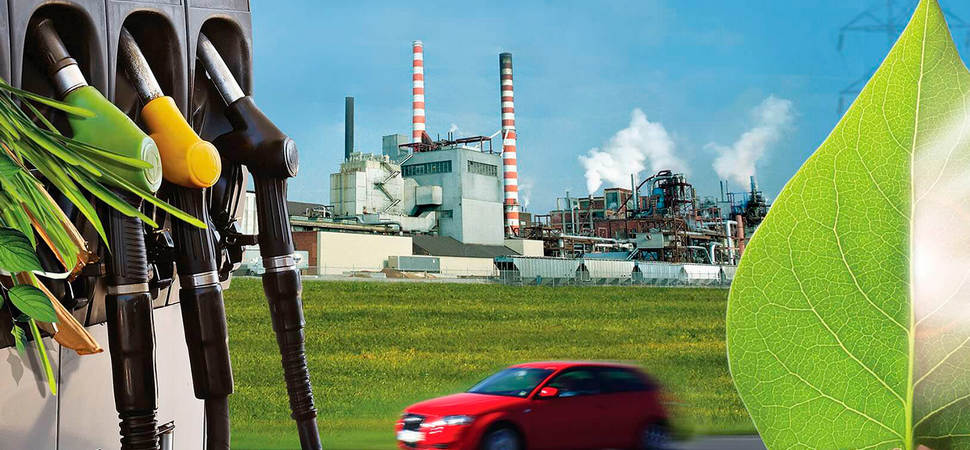Petroleum fuel is the main source of energy for the modern world. It is used in transport, industry and other fields. However, oil reserves are limited, and its extraction and processing pollute the environment. Therefore, the search for alternative energy sources that can replace oil is an urgent task.
Alternative energy sources include:
- Renewable energy obtained from natural sources that are constantly renewed, such as wind, sun, water and biomass.
- Non-renewable energy derived from fossil fuels, such as coal, gas and nuclear fuel.
Renewable energy
Renewable energy is energy that is produced from natural sources that are constantly renewed. It has a number of advantages over fossil fuels, including environmental friendliness and renewability. However, renewable energy also has a number of disadvantages, including uneven output and high capital costs.
It includes:
Energy from the wind
Wind energy is a source of energy that uses the power of the wind to generate electricity. Wind turbines convert wind energy into mechanical energy, which is then used to spin a generator that produces electricity.
Wind energy has a number of advantages over other energy sources. It is not exhausted and does not pollute the environment. In addition, wind energy is relatively cheap and its cost continues to decline.
However, wind energy also has some disadvantages. It depends on the wind, so power generation can be unstable. In addition, wind farms can still have a negative impact on the environment, for example due to noise and impact on birds.
Energy from the sun
Energy from the sun - uses the energy of the sun to generate electricity. Solar panels convert solar energy into electrical energy using the photovoltaic effect.
Solar energy plays an important role in the transition to renewable energy. It is one of the most accessible and cost-effective sources of energy that can help reduce greenhouse gas emissions and combat climate change.
It is flexible and can be used in a variety of locations including rooftops, commercial buildings and even farmland. New solar energy technologies are also being developed to make it more affordable.
However, solar energy depends on sunlight, so it can be unstable. And the production of solar panels can have a detrimental effect on the environment, but they are trying to correct this.
Energy from water
The height of water falling is the main factor determining the amount of energy that can be obtained from it. The higher the water falls, the greater its potential energy, which can be converted into mechanical energy and then into electrical energy.
There are two main ways to use water energy:
- Hydraulic power plants (HPPs) use the energy of falling water to spin turbines, which drive generators that produce electricity.
- Wave hydroelectric power plants use wave energy to spin turbines, which also drive generators that produce electricity.
Hydroelectric power plants are the most common form of hydropower. They can be built on rivers, lakes or reservoirs. Hydroelectric power plants can be very large, such as the Itaipu hydroelectric power station on the border of Brazil and Paraguay, which has an installed capacity of 14,000 megawatts. But the construction of a hydroelectric power station can have a negative impact on the environment, for example, due to flooding of land and disruption of ecosystems.
Wave hydroelectric power is a newer technology. They can be installed in the ocean or at sea. Wave hydroelectric power plants are not yet widespread and are more expensive than traditional hydroelectric power plants, but they have great potential for further development.
Energy from biomass
Biomass energy is a renewable energy source that uses organic matter such as wood, agricultural waste, industrial waste, etc. to generate heat, electricity or fuel.
Biomass can be used to generate electricity, heat and cool buildings, and produce biodiesel, bioethanol, and other biofuels.
There are several ways to use biomass to generate energy.
Biomass combustion is the most common technology for producing energy from biomass. When biomass is burned, it releases heat that can be used for heating or generating electricity.
Biomass fermentation is a process in which microorganisms break down biomass into simpler molecules such as methanol, ethanol and hydrogen. These molecules can be used to produce fuel or energy.
Biomass gasification is a process in which biomass is heated in the presence of oxygen or water vapor. When biomass is gasified, synthesis gas is formed, which consists of methane, hydrogen and carbon dioxide. Syngas can be used to produce heat, electricity or fuel.
However, burning biomass can release greenhouse gases such as carbon dioxide and methane. And also deforestation and the use of agricultural land harms the environment.

Non-renewable energy
Non-renewable energy is a more powerful and affordable source of energy than renewable energy. However, it leads to environmental pollution and depletion of natural resources.
It includes:
Energy from coal
Coal is a fossil fuel that is formed from the remains of plants that were buried underground millions of years ago. Coal is used to generate electricity, heat and produce steel and other materials.
There are two main types of coal:
- Anthracite is the hardest and most carbon-rich type of coal. It has the highest calorific value and is used to produce electricity and steel.
- Lignite is the softest and least carbon-rich type of coal. It has the lowest calorific value and is used for heating and electricity production.
Coal is a relatively cheap source of energy and can be used to generate electricity on a large scale. But it is a non-renewable fuel, and burning coal releases greenhouse gases such as carbon dioxide and methane, which pollute the air and water.
Energy from gas
The gas also comes from the remains of plants and animals that have been buried underground. Gas is used to generate electricity, heat and produce a variety of products, including plastics and fertilizers.
There are two main types of gas:
- Natural gas is a flammable gas that is formed from the remains of plants and animals. It consists mainly of methane and has a high calorific value.
- Liquefied natural gas (LNG) is natural gas that has been liquefied under pressure and at low temperatures. LNG is easier to transport than natural gas and is used as fuel for ships and cars.
Demand for gas-based energy has been growing in recent years because gas is a relatively clean source of energy that can help reduce greenhouse gas emissions.
Energy from nuclear fuel
Nuclear fuel is the fuel that is used in nuclear reactors to produce electricity. Nuclear fuel consists of isotopes of uranium or plutonium that decay, releasing heat. This heat is used to generate steam, which powers turbines that produce electricity.
Nuclear energy is one of the alternative energy sources that can ensure the sustainable existence of humanity. However, it requires significant financial costs and has a number of other difficulties, for example, the problem of radioactive waste disposal. It can also be dangerous if there is an accident at a nuclear power plant.
Another promising direction is the development of hydrogen energy. Hydrogen is an environmentally friendly and safe fuel that can be extracted from various sources, such as water, natural gas or biomass. It can be used for electricity generation, heating and fuel production, and is also used as fuel for cars, buses and other vehicles.
There are two main ways to use hydrogen to generate energy:
- Combustion - hydrogen is burned to produce heat.
- Electrolysis - water is split into hydrogen and oxygen using electricity.
However, hydrogen energy is currently more expensive than traditional energy sources. Additionally, storing and transporting hydrogen can be challenging.
Thus, the search for alternative energy sources is one of the most important tasks of the modern world. Our future depends on the success of these studies.




Comments